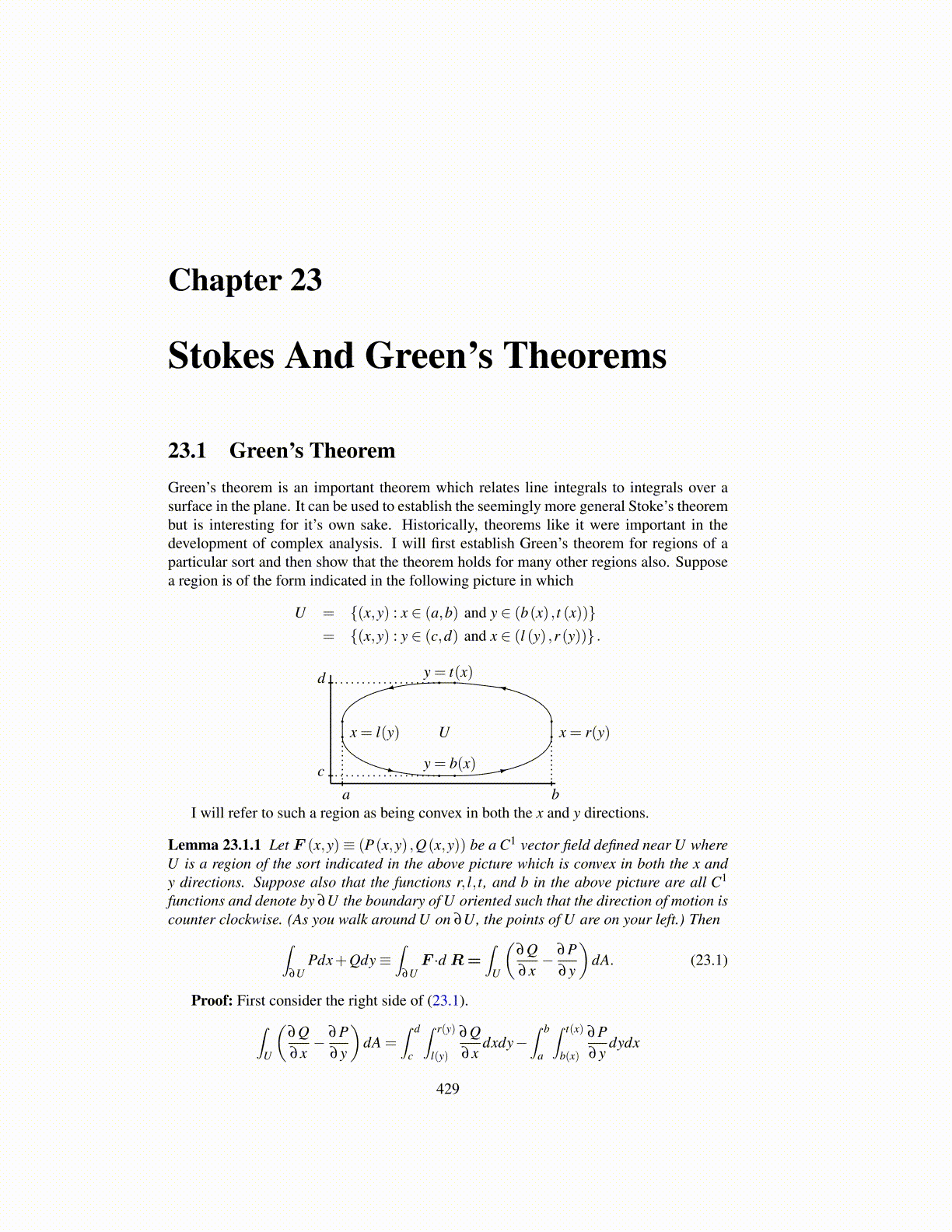
Chapter 23
Stokes And Green’s Theorems
23.1 Green’s TheoremGreen’s theorem is an important theorem which relates line integrals to integrals over asurface in the plane. It can be used to establish the seemingly more general Stoke’s theorembut is interesting for it’s own sake. Historically, theorems like it were important in thedevelopment of complex analysis. I will first establish Green’s theorem for regions of aparticular sort and then show that the theorem holds for many other regions also. Supposea region is of the form indicated in the following picture in which
U = {(x,y) : x ∈ (a,b) and y ∈ (b(x) , t (x))}= {(x,y) : y ∈ (c,d) and x ∈ (l (y) ,r (y))} .
U x = r(y)x = l(y)
y = t(x)
y = b(x)c
d
a bI will refer to such a region as being convex in both the x and y directions.
Lemma 23.1.1 Let F (x,y)≡ (P(x,y) ,Q(x,y)) be a C1 vector field defined near U whereU is a region of the sort indicated in the above picture which is convex in both the x andy directions. Suppose also that the functions r, l, t, and b in the above picture are all C1
functions and denote by ∂U the boundary of U oriented such that the direction of motion iscounter clockwise. (As you walk around U on ∂U, the points of U are on your left.) Then∫
∂UPdx+Qdy≡
∫∂U
F ·d R=∫
U
(∂Q∂x− ∂P
∂y
)dA. (23.1)
Proof: First consider the right side of (23.1).∫U
(∂Q∂x− ∂P
∂y
)dA =
∫ d
c
∫ r(y)
l(y)
∂Q∂x
dxdy−∫ b
a
∫ t(x)
b(x)
∂P∂y
dydx
429